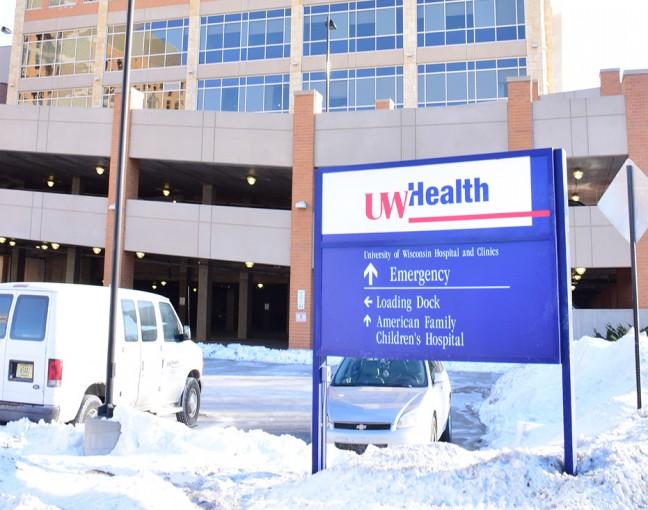University of Wisconsin Hospital has extended the treatment window for people who have strokes in their sleep to a 24-hour time frame after two national studies.
Patients who suffer from strokes are at risk 24/7, so if a stroke occurs in their sleep, they were at risk for not getting a procedure with the previous window of six hours, UW Health neurosurgeon Azam Ahmed said. Ahmed oversaw UW Hospital in one of the two studies.
Patients couldn’t get treatment unless the doctor knew the stroke happened within the specified time frame.
In certain patients, clot removal procedures need to be done within four and a half hours of the stroke, according to the American Heart Association. Removing a clot is the procedure for an ischemic stroke, which accounts for 87 percent of all strokes, according to the AHA.
Individuals who don’t arrive within the three to four hour time frame can miss receiving tissue plasminogen activator — a key treatment that saves lives and reduces long-term effects of strokes, according to the AHA.
But since the two studies — one which involved patients from UW Hospital and was recently published in the New England Journal of Medicine — showed that treatment with life-saving drugs can still be an option up to 24 hours after the stroke occurred.
“The time itself isn’t as important as seeing if there is a good brain to save,” Ahmed said.
New legislation would offer transparency, closure to families affected by errors in surgery
The new guideline was announced by the American Stroke Association in January and applies to clots in the blood vessels in the front of the brain in particular. But the idea of expanding the window relates to strokes in the back of the brain as well, Ahmed said.
UW Health is part of a program that involves hospitals from central Wisconsin to Illinois called the Telestroke program, where patients at those hospitals can get treated with the needed drugs or transferred to UW Hospital for the care they need.
According to the Telestroke website, the Telestroke technology allows neurologists located in Madison to assist in diagnosing and supporting patients at the regional hospitals emergency centers with a suspected stroke. With the use of a computer-video system, UW Health neurologists are able to interview the patient and family, perform and complete the National Institutes of Health Stroke scale as well as communicate effective treatment plans for the patients.
“The imaging we use helps us see if the brain is still viable that we can save,” Ahmed said.
UW Health announces target of $80 million in reduced expenses
Medical director of the UW stroke program, Justin Sattin, said the program is ready to incorporate new recommendations to achieve the greatest care for their patients. UW Health’s comprehensive stroke program offers doctors 24/7 and advanced surgical treatments to treat stroke sufferers.
In 2009, 34 percent of people who were hospitalized for strokes were less than 65 years of age. Smoking, diabetes and obesity are the leading causes of stroke according to the Center For Disease Control.
The CDC states about 140,000 Americans die each year from strokes making one out of every 20 deaths stroke-related, causing it to be the fifth leading cause of death for Americans.
UW medical school funds eight organizations dedicated to improving public health in Wisconsin
Americans at risk for strokes also include those who have high blood pressure and high cholesterol. In a recent update by the American College of Cardiology, physical inactivity and poor dietary habits are major, reversible causes of U.S. deaths, where high blood pressure attributed to more than 10 percent of them and high cholesterol more than 17 percent.
“We are fortunate to have three fellowship-trained endovascular surgeons on staff who already have experience with these procedures and devices,” Sattin said.














